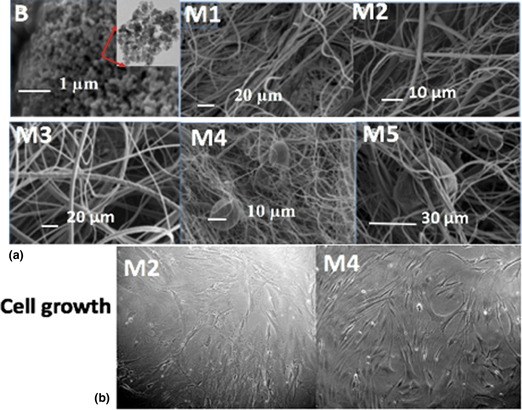Crossref Citations
This article has been cited by the following publications. This list is generated based on data provided by
Crossref.
Kodali, Deepa
Syed, Farooq
Jeelani, Shaik
and
Rangari, Vijaya K
2020.
Fabrication and characterization of forcespun polycaprolactone microfiber scaffolds.
Materials Research Express,
Vol. 7,
Issue. 12,
p.
125402.
Santiago-Castillo, K.
Del Angel-López, D.
Torres-Huerta, A.M.
Domínguez-Crespo, M.A.
Palma-Ramírez, D.
Willcock, H.
and
Brachetti-Sibaja, S.B.
2021.
Effect on the processability, structure and mechanical properties of highly dispersed in situ ZnO:CS nanoparticles into PVA electrospun fibers.
Journal of Materials Research and Technology,
Vol. 11,
Issue. ,
p.
929.
Chen, Jia
Hu, Hengwei
Song, Tiandan
Hong, Song
Li, Yan Vivian
Wang, Ce
Hu, Ping
and
Liu, Yong
2022.
Competitive effects of centrifugal force and electric field force on centrifugal electrospinning.
Iranian Polymer Journal,
Vol. 31,
Issue. 9,
p.
1147.
Slovakova, Marcela
Köhlerova, Renata
Dvorakova, Petra
Vanova, Veronika
Spackova, Martina
and
Munzarova, Marcela
2022.
CLOSTRIDIAL COLLAGENASE IMMOBILIZED ON CHITOSAN NANOFIBERS FOR BURN HEALING.
Military Medical Science Letters,
Vol. 91,
Issue. 4,
p.
324.
García-Guzmán, Lucia
Cabrera-Barjas, Gustavo
Soria-Hernández, Cintya G.
Castaño, Johanna
Guadarrama-Lezama, Andrea Y.
and
Rodríguez Llamazares, Saddys
2022.
Progress in Starch-Based Materials for Food Packaging Applications.
Polysaccharides,
Vol. 3,
Issue. 1,
p.
136.
Kodali, Deepa
Hembrick-Holloman, Vincent
Gunturu, Dilip Reddy
Samuel, Temesgen
Jeelani, Shaik
and
Rangari, Vijaya K.
2022.
Influence of Fish Scale-Based Hydroxyapatite on Forcespun Polycaprolactone Fiber Scaffolds.
ACS Omega,
Vol. 7,
Issue. 10,
p.
8323.
Kodali, Deepa
Mohammed, Zaheeruddin
Gunturu, Dilip Reddy
Samuel, Temesgen
Jeelani, Shaik
and
Rangari, Vijaya K.
2023.
Enhancement of Biocompatibility of Fish Scale-Based Hydroxyapatite-Infused Fibrous Scaffolds by Low-Temperature Plasma.
JOM,
Vol. 75,
Issue. 7,
p.
2174.
ten Brink, Tim
Damanik, Febriyani
Rotmans, Joris I.
and
Moroni, Lorenzo
2024.
Unraveling and Harnessing the Immune Response at the Cell–Biomaterial Interface for Tissue Engineering Purposes.
Advanced Healthcare Materials,
Vol. 13,
Issue. 17,
Khudir, Hanan M.
Jabur, Akram R.
and
Kadhim, Ishraq A.
2025.
Investigation of coated nanofibers based on sodium alginate loaded with antimicrobial agents.
Vol. 3321,
Issue. ,
p.
030001.


